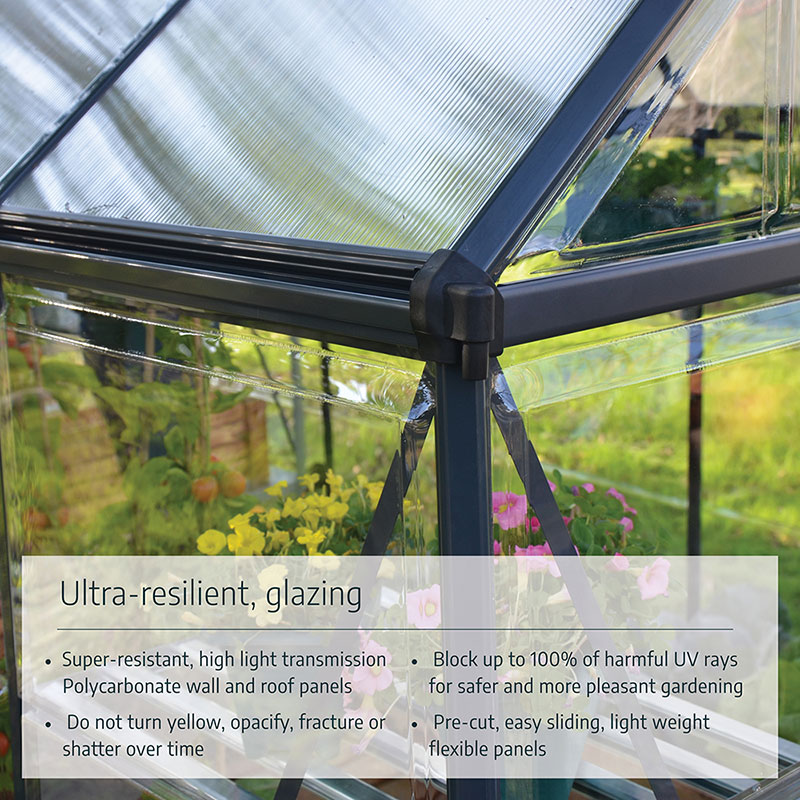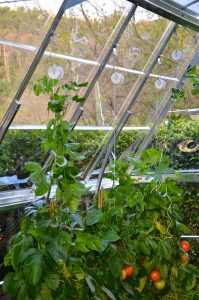Mother Nature controls the weather which makes it impossible to grow some more delicate plants, vegetables and herbs outdoors year-round in most areas of the world. However, greenhouses provide the perfect solution to the fickle nature of the elements. With either a walk-in greenhouse or a mini-greenhouse, you can continue to enjoy gardening even during the harsh winter months.
What is a Greenhouse?
A greenhouse is a simple structure that you can grow plants within. You can choose between a mini/small greenhouse, shadehouse, or larger walk-in greenhouse. Greenhouses can be elaborate or fashioned from an easy DIY greenhouse kit.
History of the Greenhouse Around the World
The concept of growing plants in such a framework dates to Roman times when Emperor Tiberius decided that he must enjoy an Armenian cucumber every day. However, the often harsh weather made growing the delicate vegetables impossible, so the gardeners implemented the use of a greenhouse to ensure that the Emperor always enjoyed a year-round supply.
By the 13th century, greenhouses had become quite common throughout much of Italy and were a must-have for the country’s wealthy. Estates started to sport often elaborate greenhouses on the grounds which were maintained by a bevy of skilled gardeners who produced delicate fruits and vegetables year-round.
Universities also started to cultivate elaborate gardens and grow exotic plants gathered from around the world in greenhouses. During the 19th century, enormous greenhouses were built in many parts of the world. In the 20th century, the geodesic dome became a common design for home greenhouses.
Modern Greenhouses
Nowadays, greenhouses are no longer only enjoyed by the wealthy. Anyone can fashion a backyard greenhouse to grow plants year-round. All any crop needs are a stable and warm environment with ample sunshine to flourish. In this greenhouse guide, we will explore everything you need to know about gardening under polycarbonate, plastic sheeting, or glass!
Figure Out Space
You’ll want to figure out how much space you need to grow the crops that you want to cultivate. Ideally, the structure should be large enough to provide ample room for the plants to spread out and have adequate air circulation and light. In addition, you’ll want space to care for the crop. Headroom is also a factor for some plant varieties or if you want to suspend hanging baskets.
Structure Choices
You’ll find greenhouse kits available for all budgets. It has never been easier to enjoy a greenhouse in your backyard. DIY greenhouse kits are easy to assemble and long-lasting.
Freestanding Greenhouses
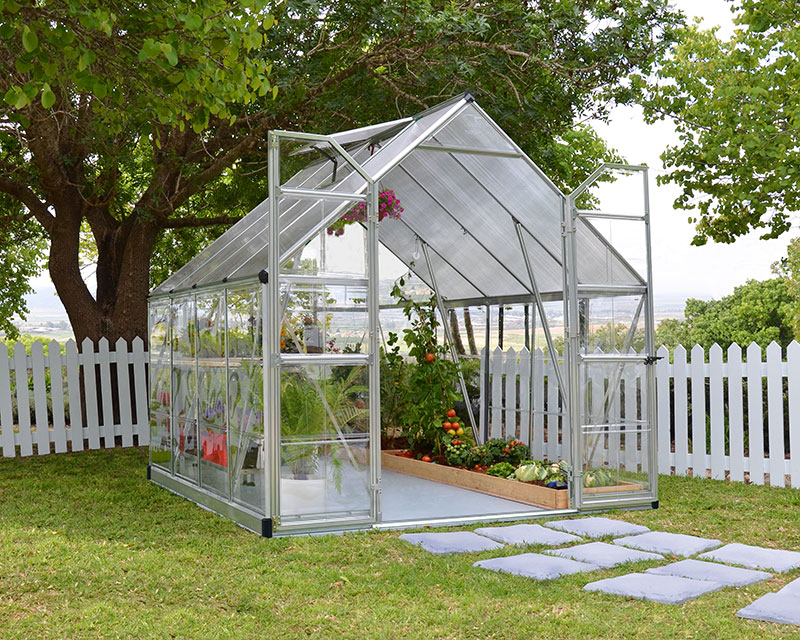
A freestanding greenhouse stands by itself without any support from another structure. It is like a little house. You can place it anywhere you want on your property.
Attached/Lean-to Greenhouses
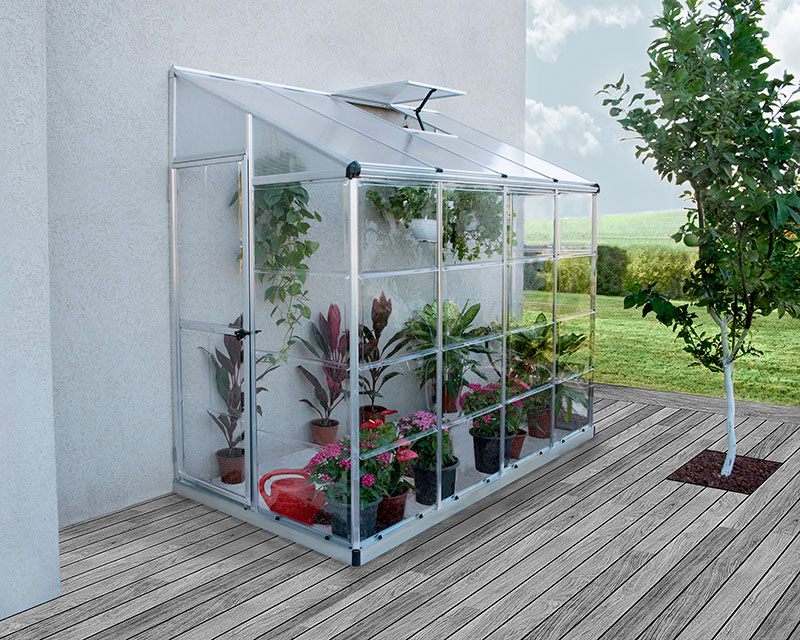
With an attached (also called a lean-to greenhouse) you do not need to build a free-standing structure or four walls. Instead, you will use a sturdy wall from your house, garage, barn, or shed to make up one side of the greenhouse. You will then build off the structure to form the greenhouse frame. The main drawback of this design is that the sunlight can only enter on three sides, so you’ll need to position your plants accordingly.
Mini Greenhouses
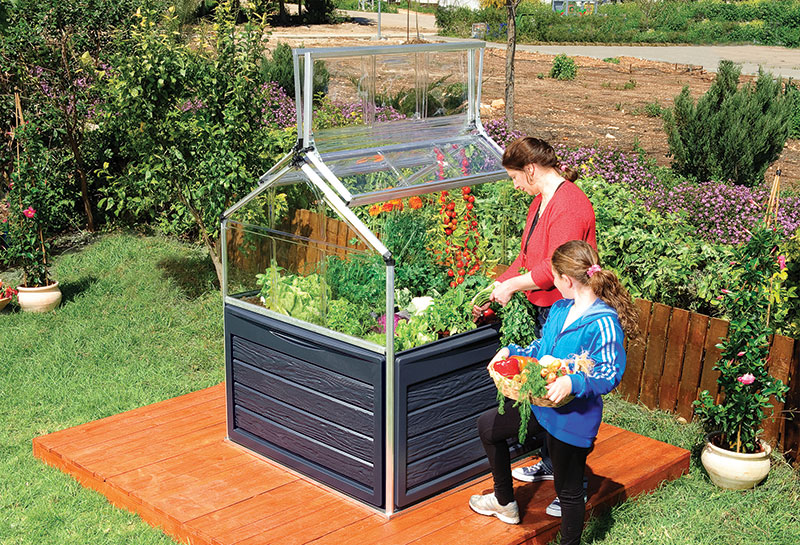
Nowadays, you can enjoy a greenhouse even if you don’t have a lot of space. With mini-greenhouses, you can create an optimum grow environment for your plants in a very small area. Mini greenhouses are perfect for a patio or rooftop garden. You can grow herbs, flowers, and vegetables. Depending on the design, there is even an area for tool storage such as with our Plant Inn mini greenhouse.
Glazing Choices
The term ‘glazing’ refers to the covering that is used around the greenhouse frame.
Types of glazing:
- Glass: Traditionally, greenhouses were fashioned from glass, but it is expensive, heavy, and can easily break.
- Poly covering: Poly covering is another option. It is affordable and the perfect way to create a microclimate for your delicate plants or seedlings. You can use tunnels or covers in a variety of sizes and shapes. This option is good for small areas or if you are new to greenhouse gardening so not sure that you want to invest in an entire greenhouse.
- Polycarbonate: The number one modern choice greenhouses is polycarbonate which is cheaper than glass and lightweight. Best of all it retains heat better than glass or plastic. You can also use polycarbonate on either flat or bent surfaces. Polycarbonate is exceptionally strong, durable, and transmits light wonderfully. At Maze, our greenhouse choices are fashioned from polycarbonate panels.
The Polycarbonate Greenhouse Choices
Polycarbonate panels are remarkably diverse. The material is cost-efficient and durable – polycarbonate is almost impossible to break. The polymer is also wonderfully effective at transmitting light. It can withstand extreme weather changes with ease and stand up to the harmful impact of UV rays.
You can pick from polycarbonate panels that are:
- Clear: Clear panels afford the greatest light transmission while offering a wonderfully unobstructed view.
- Diffused: Diffused panels are usually formed with twin-wall polycarbonate. They create more light while reducing the potential for plant burn. The added light is great for greenhouses positioned in shady locations. The twin-wall polycarbonate design provides greater insulation (U-Value) and retains heat well.
- Merged Clear and Diffused: Offers a combination of light via the roof with the sides providing even greater light transmission with unobstructed views.
Choosing the Site Location and Positioning for Sunlight
It is always nice to locate your greenhouse close to your home or garden. Ideally, position the structure so it has easy access to water and electricity. Choose a site that has maximum sunlight exposure – it should receive at least six hours of direct sun every day, especially during winter. Most people choose to orient the greenhouse in an east to west position so that the greenhouse’s large side wall receives ample full southern sun. If you cannot position the greenhouse so it receives enough sunlight, then you’ll need to invest in grow lights.
In regions that have extreme summertime heat then it’s nice to place the greenhouse by deciduous trees to afford partial shade during the height of the afternoon. However, in the winter months, the tree will drop its leaves so the greenhouse can receive full sun exposure. Do not place the greenhouse beside evergreen trees which will continue to cast shadows during the winter when your plants need the light and warmth the most.
Always make sure that the site has adequate drainage. You can lay down landscape cloth to keep the weeds out. Place about eight centimetres of gravel over the cloth to create adequate drainage.
Greenhouse Accessories
Below is a list of accessories that you might want to invest in for your new greenhouse. However, many of the walk-in greenhouses sold by Maze already come equipped with built-in windows, roof vents, gutters, and more.
- Shelving: All greenhouses need shelving for a variety of tools, pots, and more.
- A mist system: A mist system helps keep things cool.
- Heating system: During the winter months, having a backup heat system is often a necessity of the temperature dips below freezing.
- Irrigation drip kit: Drip irrigation is easy and a great way to keep your plants well-watered.
- Plant hangers: Hang your plants to utilize even more grow space.
- Tool rack: Keep your tools in one handy location and within easy reach.
- Shade kit: During the summer months, the intense sunlight can burn plants, especially delicate ones like strawberries. Fashioning a shade cloth across the greenhouse allows light but also provides cooling shade when needed.
- Fan: A fan cools off the greenhouse while creating much-needed air circulation.
- Anchoring kit: In areas that experience heavy winds or storms, an anchoring kit can hold your greenhouse in place.
- Louvre window: Open a louvre window when you need to release heat and need some much-needed air circulation.
- Potting bench: Many gardeners consider a potting bench a ‘must-have’
- Vent kit: Greenhouses become ridiculously hot and humid, so a vent kit installed allows you to control the situation.
- Thermostat: Helps you monitor the temperature within the greenhouse.
- Workbench: Makes potting and working in the space easier and more comfortable.
Greenhouse Heating System
Depending on where you live, the heat from the sun might not be enough to keep your delicate crop safe if the temperature dips extremely far below freezing. You can insulate your greenhouse or use a heating system. Usually, a 220-volt circuit electric heater works well. You can also opt to use oil or gas heaters. Nowadays, there are also solar heaters that are made specifically for greenhouses.
Radiant heat systems can also be positioned over the plants. Soil heating cables keep your plants warm when the mercury dips. However, whatever heating system you pick should have an automatic shut off for safety.
If you are seeking a more natural way to heat your greenhouse then you can position large rocks or barrels of water inside which capture the sun’s heat and retain the warmth well into the evening to naturally warm the space.
Gardening remains the number one hobby worldwide. Purchasing a walk-in greenhouse or mini greenhouse does involve making an initial investment but the years of return and enjoyment are well worth it.
About Maze Polycarbonate Greenhouses
Maze greenhouses are designed and manufactured in Israel by Palram which is a leading manufacturer of a variety of applications including innovative garden products line.
Our greenhouse range is made for both novice and experienced garden lovers who enjoys the experience and delightful feeling of growing your own. Whether you enjoy growing delicate exotic plants, veggies and herbs, live in a hot area or where it is too cold to grow outside, we have range of solutions to help you make it happen.
Our hobby greenhouses are made to the highest manufacturing standards and incorporate innovative technologies.
Some highlights of our greenhouse range:
- Super-resistant, high light transmission Polycarbonate wall and roof panels
- Block up to 100% of harmful UV rays for safer and more pleasant gardening.
- Do not turn yellow, opacify, fracture shatter over time.
- Pre-cut, easy sliding, light weight flexible panels.
Find more info at our greenhouses FAQs section.
Check out our range of greenhouses here.
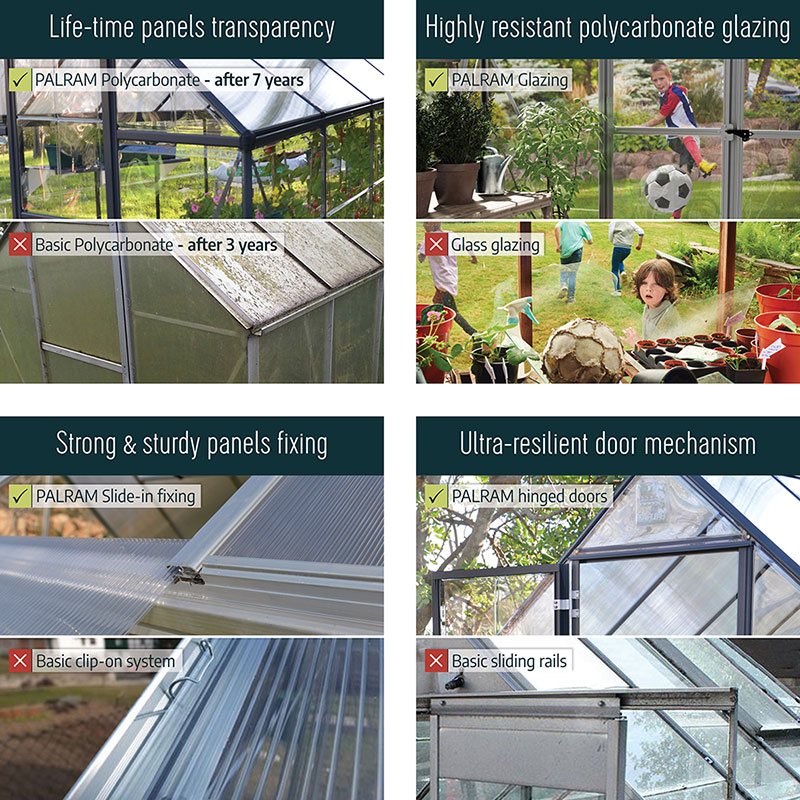
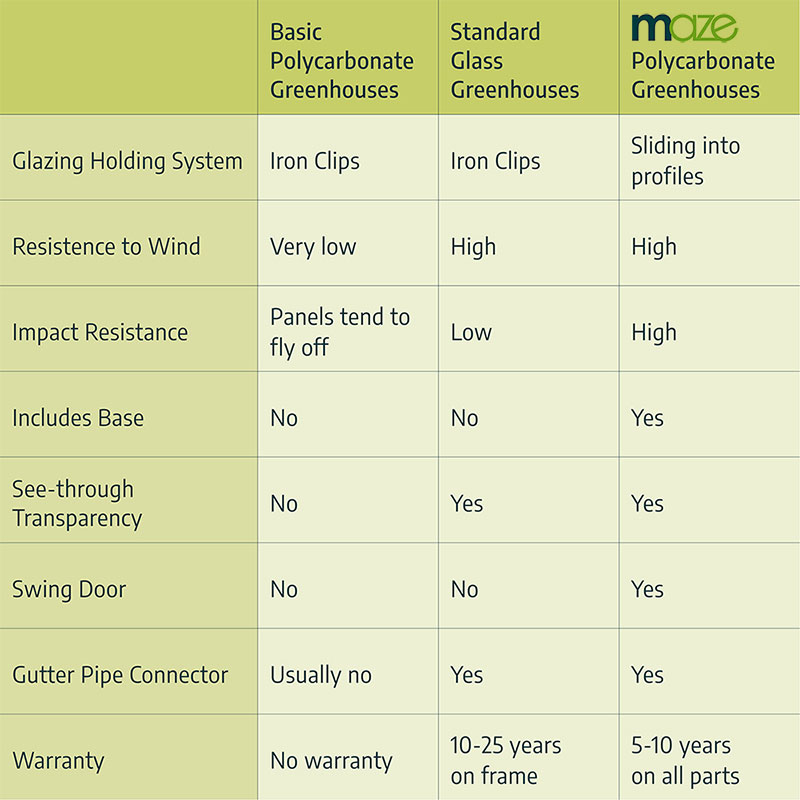
References:
https://palramapplications.com/our-tips-ideas/choosing-a-polycarbonate-greenhouse/
